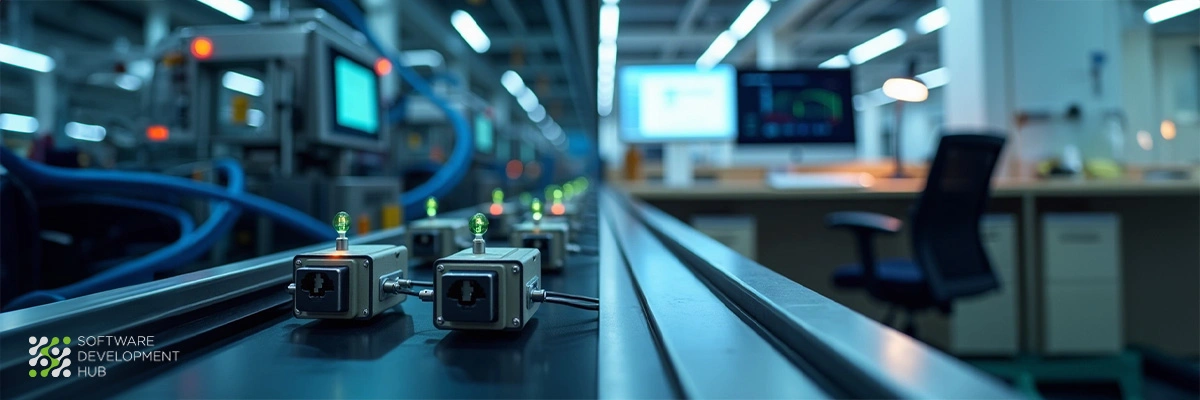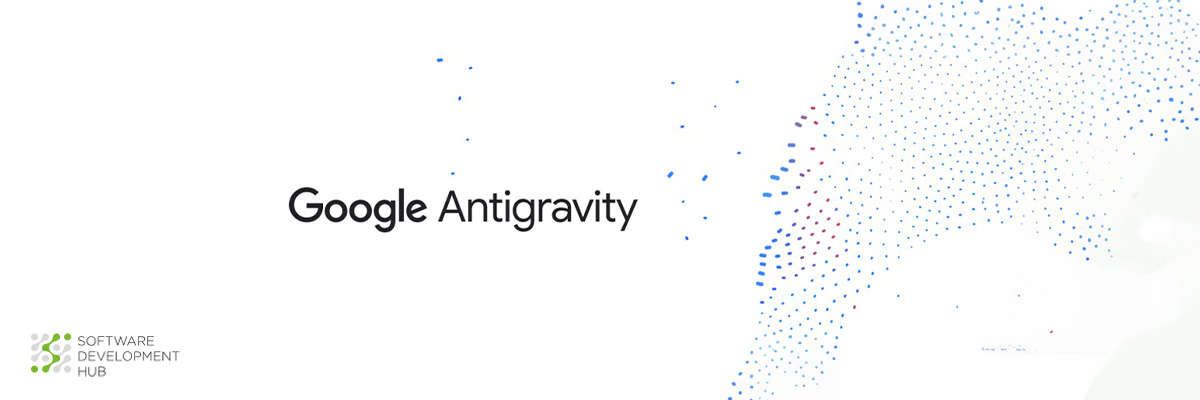IoT Software vs. Traditional Software: Key Differences Every Developer Should Know
Global spending on IoT will exceed $1.1 trillion by 2026, yet many developers still approach IoT software development using traditional methodologies. The fundamental difference between these two development approaches extends far beyond simple connectivity features. Traditional software typically focuses on user interfaces and functional requirements, while IoT software creates interconnected ecosystems that operate autonomously and adapt to real-world conditions.
Security presents one of the most pressing challenges in this space. Gartner research indicates that 25 percent of all identified enterprise attacks will involve IoT devices, despite organizations allocating only 10 percent of IT security budgets to protect these systems. This disparity highlights a critical knowledge gap that developers must address when building IoT solutions that prioritize device connectivity and real-time data processing capabilities bridging physical and digital environments.
What are the key architectural, security, and testing differences that separate IoT development from conventional software engineering? This guide examines the essential distinctions every developer should understand, from system architecture considerations to security implementation approaches and specialized testing methodologies required for connected device ecosystems.
What is IoT Software vs Traditional Software?
The architectural differences between IoT and traditional software development extend far beyond surface-level connectivity features. These fundamental distinctions shape how developers approach system design, data management, and user interaction patterns across both domains.
Definition of IoT Software and its architecture
IoT software represents specialized applications designed to manage networks of physical devices that operate autonomously within connected environments. Unlike conventional computing systems that rely on user input and manual processes, IoT software coordinates embedded systems, sensors, and actuators that continuously interact with real-world conditions.
The standard IoT software architecture employs a five-layer structure that facilitates seamless data flow from physical sensors to business applications:
- Perception layer: Captures environmental data through sensors and enables direct interaction with physical systems
- Transport/Network layer: Manages secure data transmission protocols between distributed devices
- Data processing layer: Performs real-time analysis and preprocessing of collected information
- Application layer: Houses analytical applications that extract actionable insights from processed data
- Business layer: Delivers user interfaces and visualization tools for strategic decision-making
Definition of Traditional Software and its structure
Traditional software systems operate within controlled digital environments using established client-server architectures. These systems typically require manual oversight for data input and process initiation, following predictable workflow patterns. The architecture remains static, designed for specific computational tasks rather than dynamic environmental adaptation.
Conventional software structure includes these core components:
- Frontend user interfaces for direct human interaction
- Backend processing systems for business logic execution
- Database management for structured data storage
- Business logic implementation for workflow automation
- User authentication systems for security and access control
Key focus areas: connectivity vs functionality
The primary distinction centers on operational priorities. IoT software development emphasizes continuous connectivity and autonomous data flow between distributed devices. These systems must accommodate heterogeneous hardware components from multiple vendors, each using different communication protocols and data formats.
Traditional software development prioritizes functional requirements and user experience optimization. The core difference lies in data interaction patterns: IoT systems process continuous real-time data streams from physical sources, while traditional applications typically handle periodic or manually-initiated data inputs.
Consequently, IoT software must address complex challenges including massive data volume processing, diverse network connectivity requirements, extensive horizontal scalability, and specialized security protocols designed for distributed environments. These requirements fundamentally alter the development approach compared to traditional software engineering practices.
Core Differences in Development Approach
Development methodologies for IoT and traditional software systems diverge across several fundamental dimensions. These distinctions directly influence project planning, resource allocation, and technical implementation strategies that developers must consider when transitioning between domains.
Data Handling: Real-time streams vs batch processing
The most significant operational difference lies in data processing approaches. IoT software operates on continuous real-time data streams requiring immediate analysis and response capabilities. Traditional software systems typically implement batch processing methodologies, where accumulated data undergoes analysis during predetermined intervals.
This fundamental difference creates cascading effects throughout the development process. IoT applications must maintain consistent performance under millisecond response requirements, particularly in critical applications like automated trading systems or air traffic control. Traditional batch processing serves different use cases effectively, such as end-of-month financial reporting or payroll calculations, where immediate response times are not essential.
Device Interaction: Embedded systems vs user interfaces
Traditional software development centers on user interface design and business logic implementation. IoT development requires expertise in embedded systems that establish direct communication channels with physical devices and sensor networks. This creates additional complexity layers, as IoT software must operate within hardware constraints while maintaining reliable performance in resource-limited environments.
Embedded systems within IoT architectures typically process smaller data sets locally, emphasizing real-time operations without dependence on external computing resources. This architectural approach differs significantly from traditional software patterns that rely on centralized processing and user-initiated interactions.
Security Priorities: End-to-end encryption vs standard protocols
Security implementation strategies reveal another critical distinction between these development approaches. IoT ecosystems, with projections indicating growth from 27 billion devices in 2017 to 125 billion by 2030, demand comprehensive end-to-end encryption across all communication pathways.
Traditional software security focuses on protecting defined access points within controlled environments. IoT security must address distributed attack surfaces where vulnerabilities can impact physical systems, creating potentially more severe consequences than conventional software breaches.
Scalability Requirements: Device growth vs user growth
Scalability planning requires fundamentally different approaches in each domain. IoT systems must accommodate exponential device proliferation rather than traditional user base expansion. This distinction necessitates modular architectural designs that support independent component scaling without requiring complete system redesigns.
Traditional software scalability typically addresses increasing user loads through server capacity expansion or database optimization. IoT scalability involves managing heterogeneous device networks, protocol variations, and distributed processing requirements across diverse hardware configurations.
IoT Software Development Lifecycle
IoT software development follows a specialized lifecycle that differs significantly from conventional software engineering approaches. The complexity of managing physical device interactions alongside digital processing requires structured methodologies that address unique technical and operational challenges.
Effective IoT projects begin with thorough requirement analysis that extends beyond traditional software specifications. Stakeholder interviews, surveys, and workshops provide essential insights about user expectations and operational constraints. Organizations must establish clear objectives that define specific problems smart technology will solve, rather than implementing IoT solutions without defined purposes.
Successful requirement gathering often examines existing customer pain points and analyzes proven implementations in similar markets or regions. This approach helps identify realistic use cases that deliver measurable business value while avoiding the common pitfall of technology-first thinking.
Device Selection and Integration
Hardware selection represents a critical decision point that impacts the entire system architecture. Developers must evaluate microcontroller units against single board computers, considering processing power, memory requirements, and power consumption constraints. The choice between these options depends on whether the application requires simple sensor data collection or complex local processing capabilities.
Integration challenges arise when establishing secure communication channels between diverse hardware components and software platforms. Standardized protocols become essential for ensuring reliable data transmission across heterogeneous device ecosystems.
Architecture Design: Cloud vs Edge
The architectural decision between cloud and edge processing significantly influences system performance and costs. Research indicates that approximately 75% of data will be processed outside traditional datacenters or cloud environments by 2025. This trend reflects the practical benefits of processing data closer to its source.
Edge computing reduces latency and bandwidth usage, particularly valuable for real-time applications requiring immediate responses. Cloud computing provides superior scalability and advanced analytics capabilities, making it suitable for applications that can tolerate slight delays in favor of sophisticated data processing.
Data Management and Analytics
IoT systems generate substantial data volumes that require strategic management approaches. Effective data architectures implement tiered storage solutions that distinguish between data requiring immediate processing and information suitable for historical analysis. The key lies in determining which data streams need real-time responses versus those that can be processed in batch operations.
Analytics platforms should support both predictive capabilities and data visualization tools that convert raw sensor data into actionable business intelligence. This dual approach enables organizations to respond to immediate conditions while identifying longer-term trends and optimization opportunities.
Testing and Deployment Strategies
Rigorous testing across simulated real-world conditions helps avoid the 75% failure rate commonly reported for IoT implementations. Testing strategies must account for variable network conditions, device failures, and security vulnerabilities that may not surface in controlled environments.
Deployment best practices include maintaining separate test and production environments, implementing unique device identification systems, and creating environment-specific deployment configurations. These practices reduce deployment risks and enable reliable system updates across distributed device networks.
Challenges Unique to IoT Software Engineering
IoT software engineering presents obstacles that traditional development methodologies cannot adequately address. These challenges stem from the inherent complexity of managing distributed systems that must operate reliably across diverse hardware configurations and network conditions.
Security Risks in Distributed Environments
The distributed nature of IoT ecosystems creates multiple attack vectors that cybercriminals can exploit. Almost 75% of IoT business projects fail partially due to inadequate security implementations. Unlike traditional software that operates within controlled server environments, IoT systems must secure data transmission across thousands of endpoints, each potentially representing a vulnerability.
Effective IoT security requires end-to-end encryption protocols that protect data throughout its entire journey from device to cloud. Real-time threat monitoring becomes essential when managing networks where a single compromised device can potentially provide access to the entire system.
Device Interoperability and Protocol Conflicts
Standardization remains the most significant barrier to IoT ecosystem expansion according to industry surveys. The coexistence of multiple communication protocols—WiFi, Bluetooth, Zigbee, Z-Wave—within single deployments creates integration complexities. When devices from different manufacturers use proprietary protocols, achieving seamless communication becomes a significant engineering challenge.
We should acknowledge that protocol fragmentation will likely persist as vendors continue developing specialized solutions for specific use cases. This reality requires developers to build flexible architectures that can adapt to multiple communication standards.
Scalability and Real-Time Performance
IoT architectures must accommodate exponential device growth while maintaining consistent performance standards. IDC research projects 41.6 billion connected devices generating 79.4 zettabytes of data by 2025. These volumes demand high-throughput data ingestion pipelines capable of parallel processing across distributed nodes.
Real-time processing requirements compound scalability challenges, particularly when applications require millisecond response times for critical operations. Traditional scaling approaches that add server capacity cannot address the distributed processing needs of IoT systems.
Data Overload and Storage Optimization
Massive data influxes from connected devices require sophisticated storage strategies beyond conventional database management. Effective approaches include implementing tiered storage solutions that separate frequently accessed data from historical records, compression techniques that reduce storage requirements, and automated retention policies that prevent unnecessary data accumulation.
The challenge extends beyond simple storage capacity to include data processing efficiency and retrieval optimization for analytics platforms that must transform raw sensor data into actionable insights.
Integration with Legacy Systems
Existing infrastructure often lacks the security measures necessary for safe IoT integration. Legacy systems typically operate using proprietary communication protocols that conflict with modern IoT standards like MQTT and CoAP.
This integration challenge requires careful planning to bridge the gap between established enterprise systems and new IoT capabilities without compromising security or performance in either environment.
Comparison Table
The distinctions between IoT and traditional software development become clearer when examined across key technical dimensions. This comparison table provides a practical reference for development teams transitioning between these domains or evaluating project requirements.
|
Aspect |
IoT Software |
Traditional Software |
|
Architecture |
Five-layer structure (Perception, Transport, Data Processing, Application, Business layers) |
Static architecture with Frontend, Backend, Database, Business Logic, Authentication |
|
Primary Focus |
Connectivity and data flow between devices |
Functionality and user experience |
|
Data Processing |
Real-time data streams with immediate analysis |
Batch processing during scheduled intervals |
|
Device Interaction |
Embedded systems with direct hardware interaction |
User interface-focused with manual inputs |
|
Security Approach |
End-to-end encryption across distributed systems |
Standard security protocols in siloed environments |
|
Scalability |
Focused on device growth and network expansion |
Centered on user growth |
|
Environment |
Bridges physical and digital worlds |
Operates primarily in digital realm |
|
Data Input |
Continuous real-time data collection |
Periodic or manual data inputs |
|
System Operation |
Autonomous device communication |
Requires significant manual oversight |
|
Integration |
Must handle multiple vendors, protocols, and data formats |
Typically operates in unified, controlled environment |
Understanding these fundamental differences enables development teams to select appropriate methodologies, allocate resources effectively, and set realistic project expectations based on the specific requirements of their target domain.
Conclusion
The distinctions between IoT and traditional software development extend far beyond technical specifications—they represent fundamentally different approaches to solving business problems. Throughout this analysis, we've examined architectural differences, development methodologies, and implementation challenges that separate these domains.
IoT software operates under different principles than conventional development practices. Traditional systems focus primarily on user experience within controlled digital environments, while IoT solutions must bridge physical and digital worlds through autonomous device communication and continuous data collection. This architectural distinction creates entirely different development requirements and project management approaches.
Data processing methodology represents perhaps the most significant operational difference. Traditional batch processing suits many business applications, but IoT systems require real-time stream processing with response times measured in milliseconds. Security approaches differ equally dramatically—distributed IoT environments demand comprehensive encryption strategies across multiple potential attack surfaces, unlike the standard protocols sufficient for centralized traditional systems.
The development lifecycle itself introduces complexities absent from conventional software engineering. Device selection decisions, edge versus cloud processing architecture, and interoperability challenges require specialized expertise that traditional software teams may lack. Integration with legacy systems compounds these difficulties, particularly when proprietary protocols conflict with modern IoT communication standards.
What does this mean for development teams and organizations planning IoT implementations? Understanding these distinctions becomes essential for project success and resource allocation. Teams transitioning between domains must acquire new skills in hardware integration, real-time processing, and distributed system security. The comparison table provided serves as a practical reference for identifying capability gaps and training requirements.
The business implications extend beyond technical considerations. Organizations investing in IoT solutions must plan for different scalability patterns, security frameworks, and operational requirements than traditional software projects demand. Development timelines, testing methodologies, and deployment strategies all require adjustment to accommodate IoT-specific challenges.
Both development approaches will continue evolving, but their fundamental differences will persist. Success in connected device ecosystems requires not only understanding how these systems differ, but also recognizing how they can complement existing IT infrastructure within broader digital strategies.
Software Development Hub has extensive experience in IoT software development, web and mobile engineering. We provide comprehensive custom development services, including architecture planning, business analysis, UI/UX design, quality assurance, and project management. Our team specializes in creating scalable IoT solutions that integrate seamlessly with existing business systems.
Categories
About the author
Share
Need a project estimate?
Drop us a line, and we provide you with a qualified consultation.








